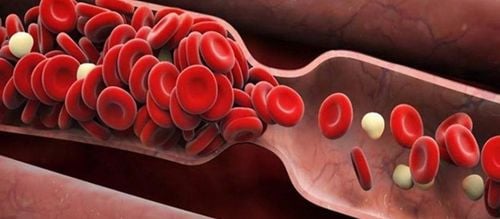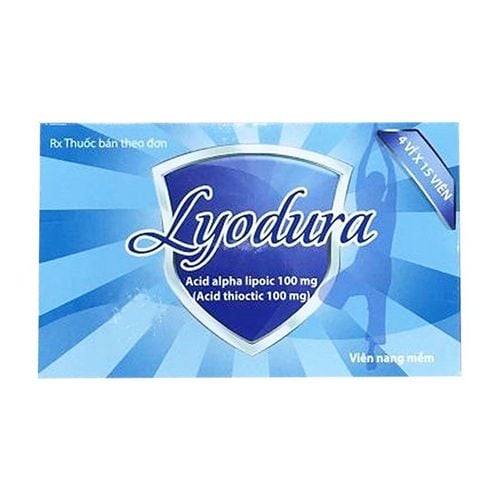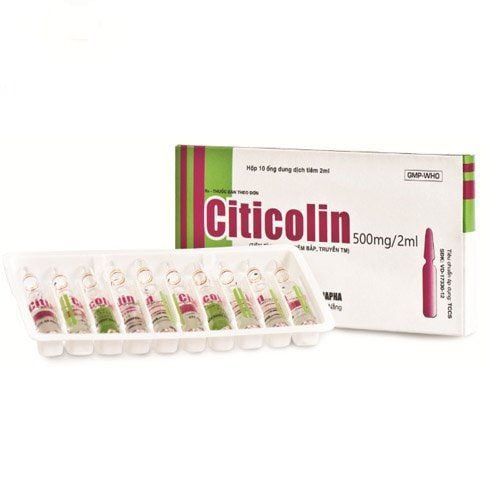This is an automatically translated article.
The article is professionally consulted by Specialist Doctor I Tran Quoc Vinh - Emergency Doctor - Department of Resuscitation - Emergency - Vinmec Nha Trang International General Hospital.Cerebrovascular accident is a disease with a high risk of death, after cancer and cardiovascular disease. Patients can also experience severe post-stroke sequelae such as lifelong disability.
1. Causes of cerebral atherosclerosis
Cerebral atherosclerosis is a slowly progressive disease. Although the exact cause of cerebral atherosclerosis is unknown, it can begin with damage or trauma to the inner layer of the arteries caused by:High blood pressure High cholesterol High triglycerides, a type of fat (lipid) in the blood Smoking and other tobacco products Insulin resistance, obesity or diabetes Heart valve disease, myocardium, temporary cerebral ischemia, brain stroke Inflammation from diseases, such as such as arthritis, lupus or infection, or inflammation of unknown cause. Once the inner wall of a brain artery is damaged, blood cells and other substances normally clot at the site of injury and accumulate in the inner lining of the artery.
Over time, fat deposits made from cholesterol and other cellular products also stick to the site of injury and harden and narrow the patient's arteries. Organs and tissues associated with blocked arteries then do not receive enough blood to function properly. Eventually, fragments of fat can break off and enter the bloodstream. High levels of cholesterol in the blood can clog blood vessels and damage important organs in the body such as the heart, causing myocardial infarction, coronary heart disease, and brain stroke.
Depending on the location of the atherosclerotic segment, there are different clinical manifestations. Cerebral atherosclerosis usually appears very early, but progresses quietly until the first signs of coronary or cerebral arteries are detected.
Atherosclerosis is a thickening and hardening of the artery walls, causing severe complications for patients

Carotid artery stenosis is rarely detected early, when a cerebrovascular accident occurs, it is too late, all treatments are only supportive.
2. What are the symptoms of cerebral atherosclerosis?
2.1 Symptoms Cerebral atherosclerosis often has symptoms of headache and tinnitus. Tension headache in the temporal region - forehead, often in the morning with a feeling of dizziness, decreased working capacity, poor memory.Some patients have only one symptom, while others have multiple symptoms at the same time. If it recovers completely by itself before 24 hours, it is called transient ischemic attack; and if it persists for more than 24 hours and often months or years, it is called a true cerebrovascular accident.
2.2 Clinical manifestations by stage Stage of compensated cerebral atherosclerosis: Blood pressure is slightly increased, sometimes blood pressure is low. The neurological state began to appear sporadically such as reduced working capacity, decreased memory, slight psychological changes, normal cranial nerves, and unstable electrical brain frequency. Decompensated cerebral atherosclerosis: Headache as above, disturbance of consciousness in the form of dementia. Hemiplegia is mild, discreet, sometimes obvious with pyramidal signs, fundus with arteriosclerosis, arterial hypertension, rarely with marked decrease in blood pressure. EEG oscillations with regular or irregular delta wave drives. The cerebral blood flow is prolonged and the diameter changes in the large and medium arteries, with changes in the vascular wall and infarction in each branch, and decreased perfusion of the foci. In the late stage: In this stage, on the basis of the above clinical table with a clear progression and worsening, mental disorders such as psychological changes, depressive states, excitability are prominent. excitement, panic, irreversible intellectual decline.
3. What treatment and prevention measures are needed?
Atherosclerosis of the brain sooner or later leads to general insufficiency of cardiac circulation, and to cerebrovascular accident, especially in patients with pre-existing predisposing factors such as advanced arterial hypertension.3.1 About treatment You should use cardiovascular drugs, blood pressure. Depending on the cause of atherosclerosis, different drugs can be used, such as in high blood pressure, vasodilators, diuretics, and salt restriction. Treatment of dyslipidemia, especially bringing the LDL-C index to the target level below 1.8 mmol/L... in combination with lifestyle changes, appropriate diet and exercise.
Patients should go for regular cardiovascular health check-ups to detect and screen for disease at the earliest

3.2 About prevention In daily life, it is necessary to focus on keeping a reasonable diet with a sufficient calorie level. Do not eat or limit the use of foods such as fatty meats, egg yolks, cream, butter, cheese, chocolate, cocoa, coconut oil, peanut oil. Exercise at least 30 minutes/day of light to moderate intensity 1-3 times/week. For patients with relapse prevention, consultation with a physiotherapist is required. Avoid nerve concussions (stress). Because stress is thought to be strongly associated with an increased risk of disease in the elderly and the onset of the disease in young people. This occurrence is often sudden, severe, and leaves many complications. So, always keep a happy and healthy mental life. Quit smoking altogether. Not only patients/groups at risk of cerebrovascular accident but also normal people are also advised to stay away from smoke because of its proven harmful effects on the body. Just like cigarette smoke, many studies have shown that chronic alcoholism and heavy drinking increase stroke risk factors. Because heavy drinking can be linked to high blood pressure, increased blood clotting, and decreased blood flow in the brain. Actively and patiently treat pre-existing diseases, especially those with high blood pressure, diabetes, and hyperlipidemia, who have had a temporary ischemic attack according to their specialty. In cerebrovascular accident, emergency and prompt treatment are very important. If the golden period passes, the patient's likelihood of complications may be higher. The technique of treating cerebral artery thrombosis has been applied at Vinmec International Hospital system to increase the chances of treating patients with cerebral infarction in particular and thromboembolic diseases in general.
The technique is indicated for the following patients:
Subarachnoid hemorrhage due to rupture of cerebral aneurysm Infarction due to large cerebral artery occlusion. Brain haemorrhage due to brain vascular malformations The outstanding advantage of this method is the use of MRI 3.0 and 640-sequence CT scanners for interventional techniques to remove cerebral artery thrombosis.
Doctor Tran Quoc Vinh has more than 6 years of working experience (starting in 2011) in the field of Emergency Medicine, he used to work at the Emergency Department of Khanh Hoa Provincial General Hospital, participated in medical examination and treatment. for many clinics in Nha Trang area before being a doctor of emergency department at Vinmec Nha Trang International General Hospital as it is today.
Please dial HOTLINE for more information or register for an appointment HERE. Download MyVinmec app to make appointments faster and to manage your bookings easily.














